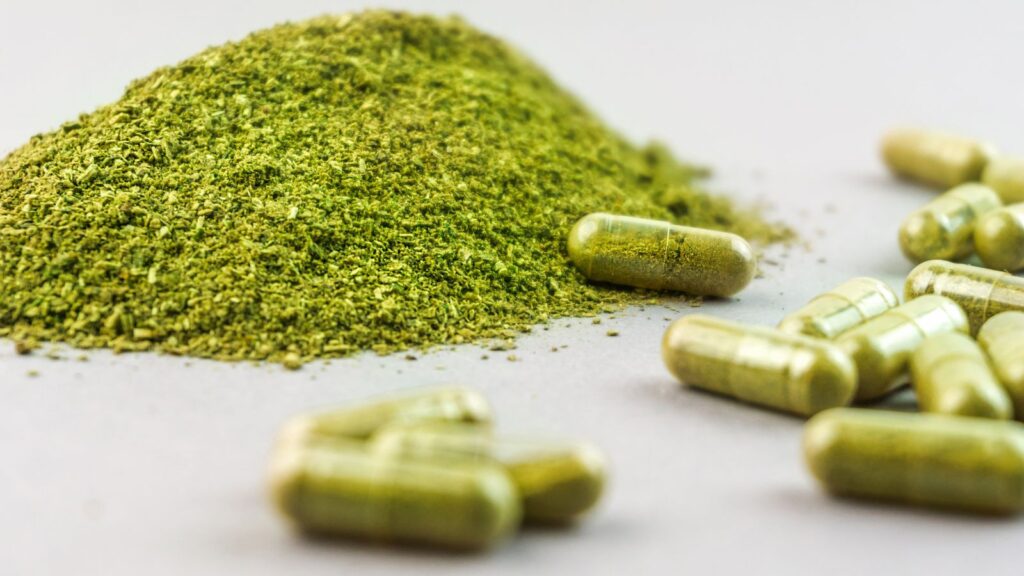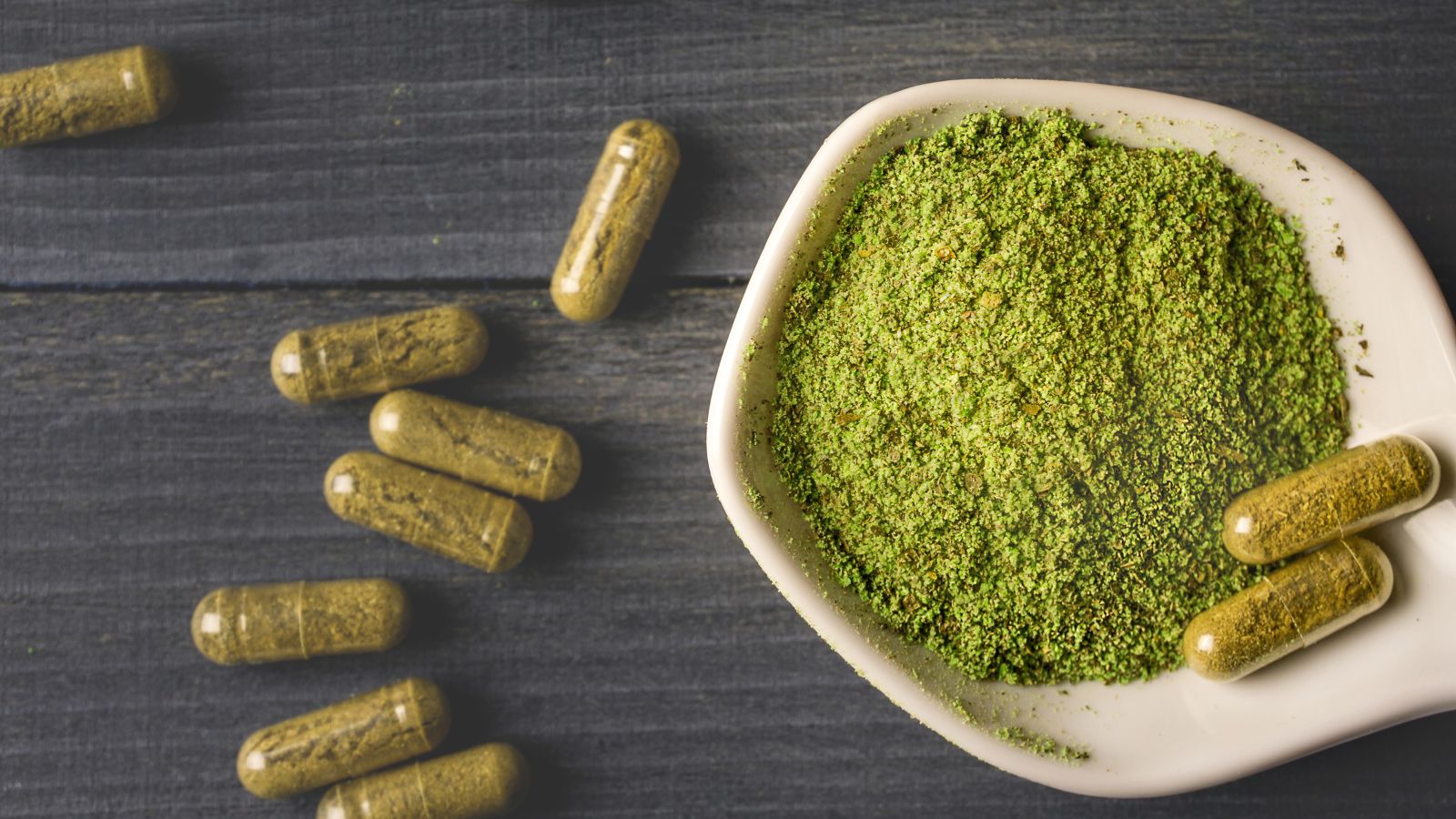Kratom use has grown in recent years, despite limited regulation in the U.S. Native to Southeast Asia, kratom contains compounds that activate the brain’s opioid receptors, making it potentially addictive. Many users turn to it to relieve pain, but high doses or mixing it with other substances can lead to dependence and serious side effects. Both the Federal Drug Administration and the Drug Enforcement Administration have issued warnings about its risks.
In this article, we’ll look at the signs of kratom addiction, its withdrawal effects, and the recovery options available.
Kratom Withdrawal Symptoms
When users stop taking Kratom, many report symptoms similar to those of opioid withdrawal. They are both physical and mental symptoms. These include a runny nose, muscle aches, elevated heart rate, insomnia, depressed mood, anxiety, and other drug addiction-related symptoms.
Research suggests that both the physical symptoms and psychological symptoms often overlap. Mild symptoms might appear within a day after the last dose, while more moderate to severe symptoms can develop, especially in individuals who have used Kratom long-term or at high doses.
Psychological Withdrawal Symptoms
Psychological withdrawal symptoms, including anxiety, depressed mood, irritability, and intense cravings, are commonly reported during kratom withdrawal. Individuals with pre-existing mental health conditions or a history of opioid use disorder may be particularly vulnerable to these effects.
A background of chronic pain, mental health challenges, or past substance abuse can further increase the risk of severe emotional distress. In many cases, cognitive symptoms such as difficulty concentrating or mental fog may persist for weeks, even after the physical symptoms have faded. This underscores the importance of strong support networks and access to therapeutic care during recovery.
Kratom Withdrawal Timeline
Most users report that acute kratom withdrawal begins 24 hours after the last dose. After this, it peaks around 2 to 3 days, and gradually subsides after a week. However, a protracted kratom withdrawal timeline may include lingering mood symptoms or fatigue, which can last for several weeks. Higher doses and long-term kratom users often report a longer and more uncomfortable timeline, which would require extended withdrawal management or medical detox.
Substance Use Disorder and Kratom Dependency
Although often marketed as a dietary supplement, Kratom’s addictive properties can lead to drug dependency and substance use disorder in some users. Like opioid addiction, kratom misuse involves developing tolerance, experiencing cravings, and struggling to quit despite harmful consequences.
Documented parallels between kratom use disorder and opioid addiction continue to emerge. Clinical guidelines emphasize the importance of closely monitoring individuals who show signs of drug dependence. This is especially important for those using kratom to manage chronic pain or mental health issues without medical supervision.
Physical Symptoms of Kratom Withdrawal
Physical symptoms of kratom withdrawal often include muscle aches, a runny nose, abdominal discomfort, elevated heart rate, sweating, and, in some cases, gastrointestinal upset. In controlled trials or clinical detox settings, these physical symptoms are comparable in severity to moderate withdrawal symptoms from prescription opioids. Muscle aches and fatigue tend to last longer. Physical and psychological symptoms are intertwined and contribute substantially to distress in withdrawal.
Health Effects of Kratom Use
Kratom has traditionally been used in Southeast Asia in low doses as a mild stimulant and natural pain reliever. However, newer formulations, such as powders, concentrated extracts, and high-dose products, have become more widely available. These formulations carry a significantly higher risk of adverse effects.
When used at higher doses, kratom products more reliably activate opioid receptors, increasing the risk of dependence, withdrawal symptoms, and drug toxicity. Additionally, reports have documented cases of harmful bacterial contamination and dangerous interactions with other substances. Neither the World Health Organization (WHO) nor the U.S. Food and Drug Administration (FDA) recognizes or approves the medical use of kratom.
Medical Detox and Treatment of Kratom Withdrawal
Managing kratom withdrawal often involves medical detox and treatment approaches similar to those used for opioid dependence. Clinicians may prescribe tapered medications or supportive therapies to reduce the severity of symptoms. In some cases, medications originally developed for opioid withdrawal have been repurposed to assist with kratom detox.
Medically supervised detox can shorten the withdrawal timeline and enhance patient safety. Because psychological symptoms, such as anxiety, irritability, or cravings, can persist after physical symptoms subside, counseling and mental health support are often essential to reduce emotional distress and prevent relapse.
Mental Health and Support During Recovery
Many people experiencing Kratom withdrawal also struggle with mental disorders. This includes underlying anxiety, depression, or past substance abuse, which can shape both withdrawal severity and recovery prospects.
Addressing mental health during treatment is essential. Mental health professionals may provide therapy, coping tools, and psychoeducation to support emotional regulation. Improved mental health and early intervention can help prevent post-acute withdrawal complications and reduce the risk of relapse or substance dependence.
Use Disorder and Recovery Outcomes
Data taken from several surveys suggest that around 10-15% of kratom users develop a use disorder. Though more research is essential, patterns indicate that these disorders are similar to those seen in opioid use disorder or alcohol dependence. Individuals with high stress, chronic pain, drug and alcohol dependence, or mental health issues are more vulnerable. Research indicates that combined substance abuse and mental health interventions yield the best outcomes. Treatment might include relapse prevention planning, behavioral therapy, and a structured follow-up.
Coping Strategies to Manage Withdrawal Symptoms
Practical strategies can help manage both physical and psychological symptoms. These include hydration, sleep hygiene, gentle movement, nutritional support, and stress reduction techniques.
Combining mental health support with physical self-care eases discomfort. Many experts also recommend peer support groups or counseling sessions to normalize the experience and promote emotional validation during recovery.
Why Research and Regulation Matter
While Kratom remains unregulated in many areas, research continues to examine its addictive potential. Substance abuse organizations and the National Institute of Health have called for a systematic review of Kratom’s risks and benefits. The Diagnostic and Statistical Manual and opioid epidemic guidelines caution against unsupervised use of Kratom.
Continued research, regulation, and public awareness campaigns are essential to reduce negative consequences and support safe therapeutic interventions.
Conclusion
Kratom may seem like a natural solution for stress or pain, but it comes with real risks. Regular use can lead to addiction, withdrawal, drug abuse, and mental health challenges. Fortunately, recovery is possible with the proper support.
If you or someone you care about is struggling with kratom use, you don’t have to face it alone. A rehab in Southern California can offer detox, therapy, and ongoing support to help you heal physically and emotionally.


